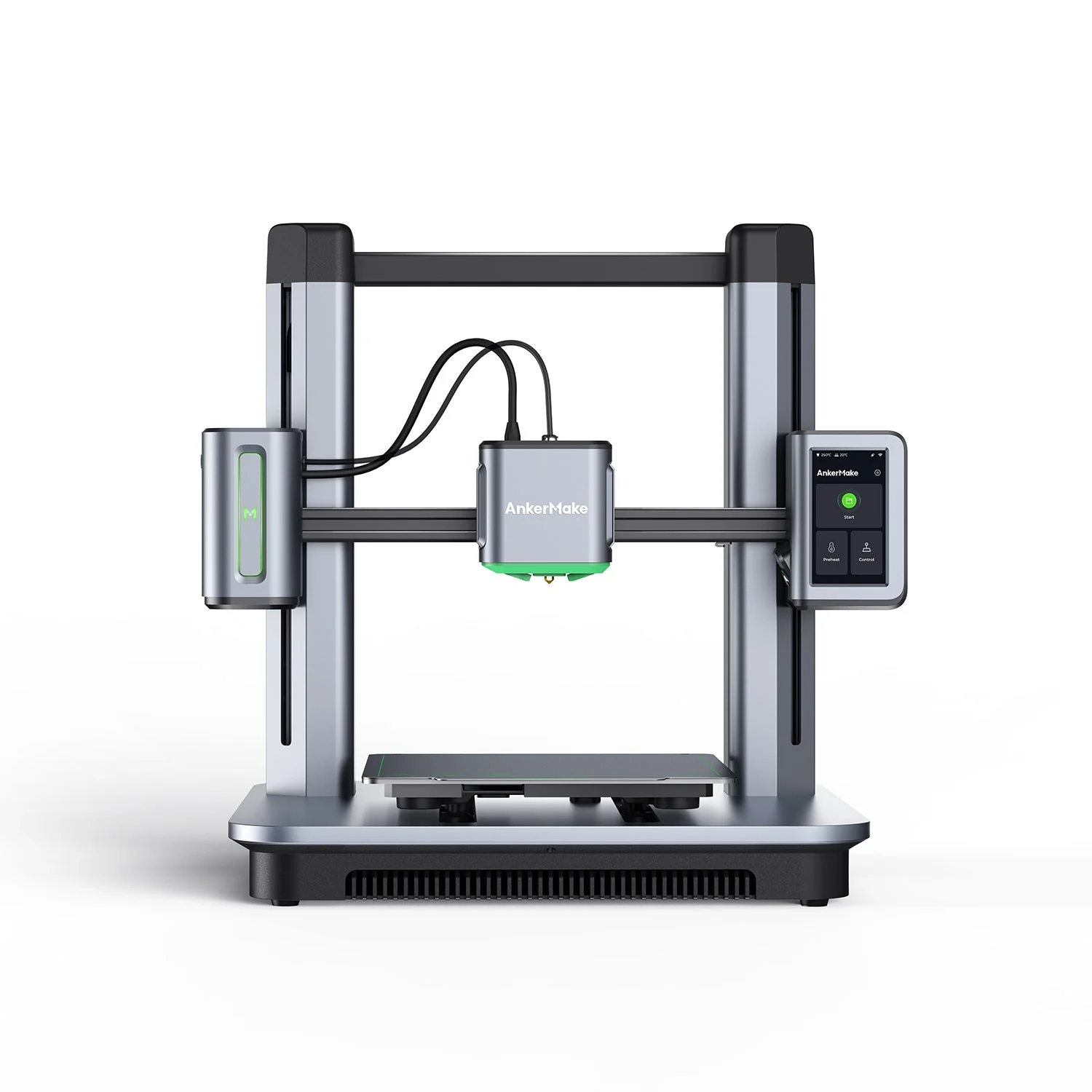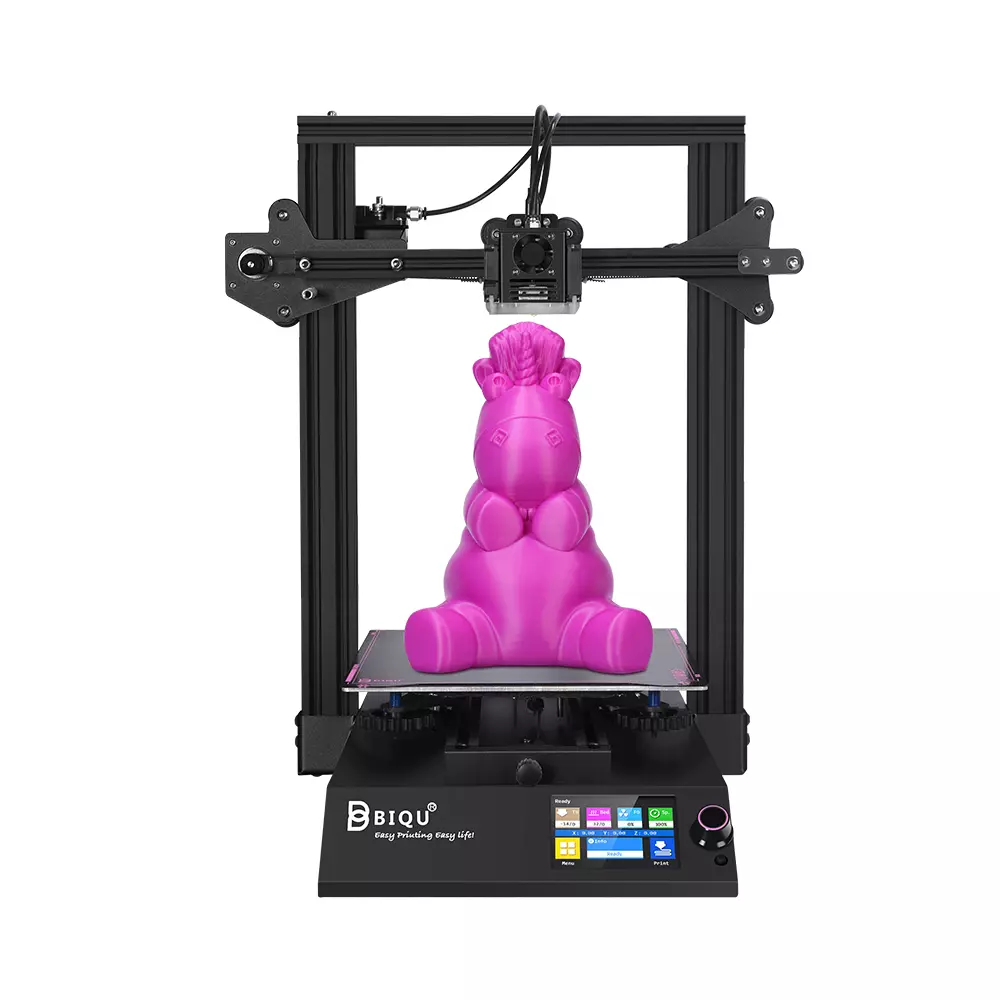Compare M5 vs BIQU B1
Comparison between the best 3D printers
Choose the best 3D printer at the best price. The cheapest 3D printers are here.
Buy a 3D printer here with 3D Fila.
 |
 |
|
| Model | M5 |
BIQU B1 |
| Printing Material | Filament | Filament |
| Buy Filament for AnkerMake M5 | Buy Filament forBigTreeTech BIQU B1 | |
| Estimated price | $497,00 | $269,00 |
| Manufacturer | AnkerMake | BigTreeTech |
| Release Year | 2023 | 2020 |
| Print Volume [mm] | 235x235x250 | 235x235x270 |
| Printer Size [mm] | 502x438x470 | 412x402x492 |
| Weight [kg] | 12,6 | 8,00 |
| Power Loss Recovery | YES | YES |
| Enclosed printer | NO | NO |
| Bed Leveling | Automatic | Manual |
| Filament End Sensor | YES | YES |
| Bed type | Heated | Heated |
| Power supply system | Direct Drive | Bowden |
| Standard nozzle | 0,4 | 0,4 |
| Maximum Nozzle Temperature [°C] | 260 | 250 |
| Maximum Bed Temperature [°C] | 100 | 100 |
| Maximum printing speed [mm/s] | 500 | 100 |
| Filament holder | YES | YES |
| Camera for supervision | YES | YES |
| Recommended filaments | PLA, PETG, ABS | PLA, TPU, ABS, PETG |
| Recommended slicers | AnkerMake Studio (macOS, Windows), Simplify3D, Ultimaker Cura, PrusaSlicer | Cura, Simplify, Slic3r |
| Maximum Resolution [mm] | 0,1 | 0,1 |
| Processor | 32 Bits BTT SKR V 1.4 | |
| Display | Touchscreen 4,3'' | Touchscreen TFT 3,5'' |
| Power Supply | 350 W | 24V / 360W |
| Connectivity | Wi-Fi, USB-C, OTA Upgrade | SD / USB |
| Operating systems | Windows, Linux, Macbook | Windows, Mac, Linux |
| Date of registration in the system | 2024-07-08 | 2021-04-14 |
| Release date | 2023 | 2020 |
| Extra features | The AnkerMake M5 printer stands out for its impressive print speed, reaching up to 500mm/s. It features AI print monitoring, an integrated camera for creating timelapses, auto-leveling bed with pressure sensor, direct extruder, flexible PEI-coated build plate, and Wi-Fi and USB-C connectivity. Assembly is quick and easy, and the printer is designed to deliver high print quality and ease of use. | The BIQU B1 is an advanced 3D printer with a silent 32-bit BTT SKR V1.4 motherboard and ARM Cortex-M3 CPU, offering DIY interfaces (I2C, SPI, WiFi) and dual Z-axis. Its dual BTT B1 TFT35 V3.0 operating system allows real-time monitoring and multiple printing modes, including G-code visualization effects. It stands out for its BIQU SSS (Super Spring Steel), ensuring easy model adhesion and simplified removal, with the possibility of using it on both sides. It includes a filament sensor, automatically pausing printing in case of filament breakage. The multicolored RGB lights integrated into the hotend allow you to view the printing status even at night. Additional notes include the need for a BIQU-specific Type-C cable and extra interfaces for smart filament sensor and BL Touch. |
| Support for multiple colors and materials (AMS and CFS) | NO | NO |
Notes * |
||
| Cost-benefit | 7 / 10 | 7 / 10 |
| Hardware | 3.5 / 10 | 2 / 10 |
| Tela | . | . |
| Print volume | 3 / 10 | 3 / 10 |
| Performance | 4 / 10 | 1 / 10 |
Conclusion |
| In comparing the AnkerMake M5 and the BIQU B1 3D printers, we can draw several conclusions based on various factors, including price, features, and performance. The AnkerMake M5, while positioned at a higher price point, offers a significant advantage in terms of print speed, with capabilities of up to 500mm/s and features designed for user convenience, such as automatic bed leveling, a touchscreen interface, and extensive connectivity options including Wi-Fi and USB-C. Its advanced AI print monitoring and integrated camera make it an excellent choice for users looking for high-quality output and ease of use in their printing experience. On the other hand, the BIQU B1 provides a strong value proposition as a more affordable option. While it lacks the high-speed capabilities of the M5, its robust build quality, dual Z-axis support, and quiet operating motherboard demonstrate well-rounded performance for those who may prioritize durability and DIY enhancements. The inclusion of features like a filament sensor and a unique build plate further enhance its functionality. Ultimately, choosing between these two printers depends on user priorities. If budget constraints are a primary consideration, and the user requires fundamental features without high-speed demands, the BIQU B1 serves as a capable and economical choice. However, for those willing to invest more for speed, ease of use, and advanced features, the AnkerMake M5 stands out as the superior option. Thus, both printers cater to different segments of the market, fulfilling diverse needs and preferences in the realm of 3D printing. |

